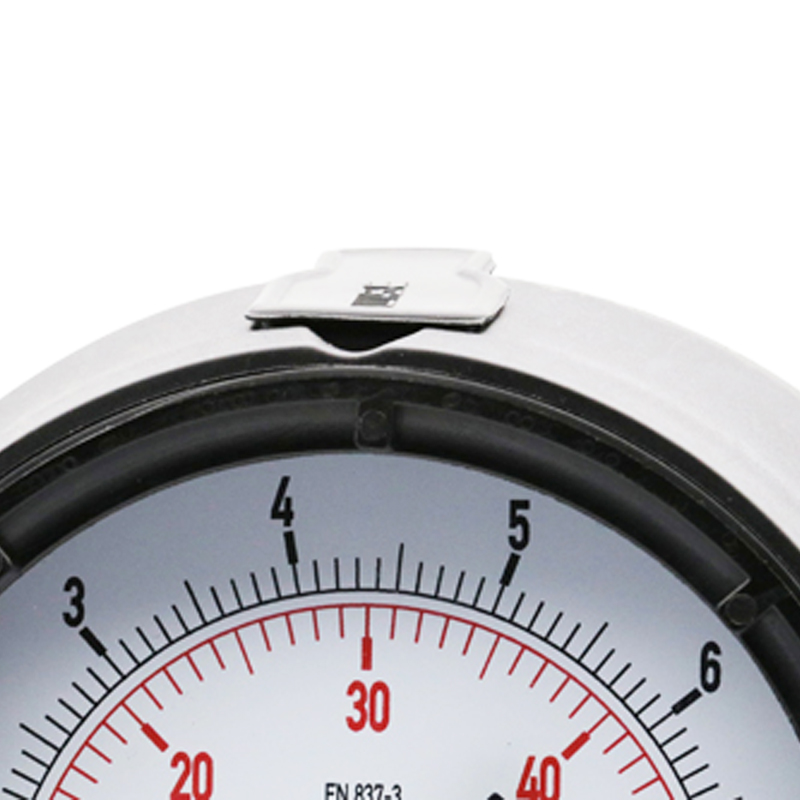
Dec . 06, 2024 08:51 Back to list
diaphragm type pressure gauge
Understanding Diaphragm Type Pressure Gauges
Pressure measurement is a crucial aspect of various industrial, scientific, and engineering applications. Among the various types of pressure gauges available, the diaphragm type pressure gauge stands out for its reliability and accuracy. This article explores the construction, working principle, advantages, applications, and maintenance of diaphragm type pressure gauges.
Construction of Diaphragm Type Pressure Gauges
A diaphragm type pressure gauge primarily consists of a flexible, thin membrane known as the diaphragm, typically made from materials such as stainless steel, bronze, or other alloys. This diaphragm is housed within a protective case that is sealed to prevent fluid ingress and maintain calibration. The diaphragm is connected to a metallic spring or an electronic transducer, which converts the mechanical displacement caused by pressure changes into an easily readable format, typically in pounds per square inch (PSI) or pascals (Pa).
The design of the diaphragm is critical. It can be circular, cylindrical, or rectangular, depending on the application and the range of pressure to be measured. The connection point for pressure to be measured is usually at the back of the gauge, allowing media to exert force on one side of the diaphragm.
Working Principle
When pressure is applied to the diaphragm, it deforms, causing a mechanical movement. This movement is directly proportional to the pressure applied. The deflection of the diaphragm is transferred to a pointer via a system of levers or gears, which then indicates the pressure on the calibrated scale of the gauge. In digital versions, this mechanical movement is converted into an electrical signal which is then displayed on a digital screen.
The sensitivity and accuracy of a diaphragm type pressure gauge depend on various factors, including the diaphragm material, its thickness, and the design of the mechanical linkages. For high-pressure applications, a thicker diaphragm can withstand greater stress without yielding, making it an ideal choice for harsh environments.
Advantages of Diaphragm Type Pressure Gauges
diaphragm type pressure gauge

One of the primary advantages of diaphragm type pressure gauges is their ability to measure both gauge and differential pressure accurately. They are also known for their excellent performance in corrosive environments, as the selection of materials can be tailored to withstand specific chemicals and conditions. Diaphragm gauges are less prone to mechanical failure compared to other types of gauges because they avoid direct contact with the pressure medium, which can lead to wear and tear.
Furthermore, diaphragm type pressure gauges provide high accuracy and reliability over a wide range of temperatures and pressures. They are designed to minimize hysteresis—the difference in pressure readings during the pressure increase and decrease—which is essential for precision instrumentation.
Applications
Diaphragm type pressure gauges are widely used across different industries, including oil and gas, pharmaceuticals, food and beverage, and chemical processing. Their ability to handle viscous and corrosive fluids makes them suitable for applications like monitoring tank levels, controlling pumps, and ensuring safe operating pressures in various systems.
In the pharmaceutical industry, for instance, diaphragm gauges help maintain the pressure necessary for processes like sterilization. In the food and beverage industry, they are used to measure the pressure in brewing facilities, ensuring quality and consistency in product manufacturing.
Maintenance and Care
To ensure the longevity and accuracy of diaphragm type pressure gauges, regular maintenance is essential. This includes periodic calibration, visual inspections for leaks or damage, and cleaning. Gauges exposed to corrosive substances should be regularly checked for signs of material degradation.
In conclusion, diaphragm type pressure gauges are indispensable tools in pressure measurement across many industries. Their robust design, accuracy, and versatility make them suitable for a wide array of applications, ensuring safety and efficiency in operations. Understanding their construction, working principle, and maintenance requirements is crucial for professionals involved in any field where pressure measurement is vital. With proper care, these gauges can provide reliable service, contributing to the smooth operation of various systems and processes.
-
High-Precision 5 Valve Manifold Differential Pressure Gauge Suppliers
NewsApr.29,2025
-
High-Precision Diaphragm Vacuum Pressure Gauges Manufacturers & Quotes
NewsApr.29,2025
-
Omega Differential Pressure Gauges High Accuracy & Durability
NewsApr.28,2025
-
Low Pressure Differential Pressure Gauges Precision Solutions & Quotes
NewsApr.28,2025
-
Digital Diaphragm Pressure Gaauge Precision Measurement & OEM Quotes
NewsApr.28,2025
-
Differential Pressure Gauge China Price High-Accuracy & Best Quotes
NewsApr.28,2025
